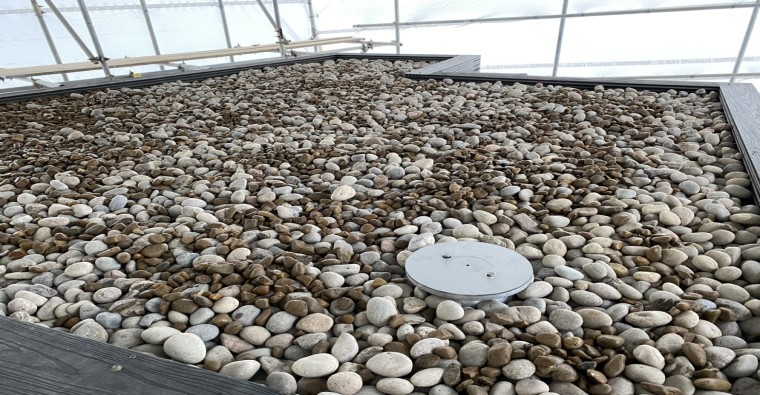
(Retro)fit for Purpose: Queen’s Gate Place Mews Blue Roof
Using its unique RoofBloxx blue roof attenuation system, ACO Building Drainage retrofitted a blue roof on an extended building in the middle of London where it was initially thought impossible.
Combined with its cobbled walkway, impressive arched entrance, and its status as part of Kensington’s Queen’s Gate conservation area, Queen’s Gate Place Mews is one of London’s most prestigious places to live. The mews is a collection of quaint properties that retain their quintessentially London façades.
The Lodge at Queen’s Gate Place Mews was revamped and extended with a mansard roof allowing for a second storey. One of the key challenges of the project was meeting SuDS (sustainable urban drainage system) requirements as set out by the planning committee from The Royal Borough of Kensington and Chelsea (RBKC), including managing water runoff from the roof.
To meet the planning criteria, principal contractors Keystone Construction worked with rainwater harvesting company Aquality and ACO Building Drainage to retrofit a unique blue roof attenuation system above the roof without risking water leaking onto the mansard roof itself.
Blue sky thinking
With sustainable drainage a vital factor of the planning committee’s approval, Keystone consulted with a number of blue roof manufacturers and roofing contractors however, all the suppliers Keystone approached had refused the project. They had stated that it would be impossible given the small roof area and the necessity of holding the water on the roof’s surface while controlling the runoff rate.
This is where Aquality and ACO stepped in: to create a free-standing retrofit application using ACO’s innovative patented RoofBloxx attenuation system.
To receive planning permission, the project had to meet compliance by controlling runoff, preventing flood risks and overwhelming the sewer. By retrofitting a standalone blue roof system, Aquality could install the ACO system on top of the roof build up, independently of the roof.
With sustainable drainage becoming a growing concern for the construction industry, the ability to retrofit SuDS solutions such as blue roofs is an increasingly significant part of a roofing professional’s service portfolio. These projects require careful planning, so working with experts is always advised.
Lasting design
For many retrofit projects, especially in urban areas, it is impractical to have a tank installed underground. Even in cases where this is possible, it can require sacrificing a basement storey. An underground tank in the case of Queen’s Gate was not a viable option, so Neill Robinson-Welsh, consultant at ACO, worked with Aquality on the attenuation design which would sit above the roof structure. With a footprint of 13m² and two layers measuring 30mm each, ACO’s RoofBloxx cells can withstand extreme rainfall events and control runoff at 0.07 litres per second.
The system comprises a free draining edge upstand, the inside of which has a drainage layer placed directly on the gradient roof and on the inside of the upstand. A geotextile membrane was then installed on top of this layer and the roof fall built out to create a level invert for the open tank that forms part of the ACO patented system.
A geomembrane was then placed inside and detailed at the edges and around the soil pipe, and ACO RoofBloxx Cell units put inside the liner to create the attenuation void. A further geotextile was set down over the top to prevent fine sediment entering the open tank, and then cobble ballast was laid as a final layer.
For any rainfall event, water is held in the tank at the base before being discharged at a controlled rate through the system’s flow restrictor. The water then runs across and down the sides of the mansard roof into the gutter and away to the sewer system.
Bonding and unblocking
The retrofit was completed in under a day thanks to the robust and lightweight ACO RoofBloxx units that can be manually handled and interlocked in a bonded structure.
As well as meeting the SuDS principles, ACO had to ensure the system would be easy to maintain as – with only a 10mm outlet for the surface water to drain through – debris could block the outlet. ACO created an access point to the attenuation tank to facilitate regular cleaning and any unblocking needed.
Neill said: “When we were approached by Keystone and Aquality, we knew that only our ACO RoofBloxx system would meet the brief of the retrofit. Although the roof area is small, the project has been hugely rewarding and satisfying. This project goes to show how versatile the ACO RoofBloxx attenuation system is.”
For more about how ACO Building Drainage can assist in more retrofit projects and the ACO RoofBloxx system, see ACO.co.uk.